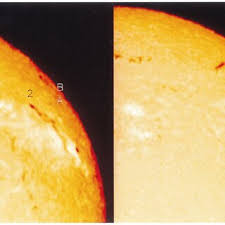The sun, our celestial beacon of light and energy, unveiled a mesmerizing spectacle on Monday, June 3. In a breathtaking display captured by a NASA solar observatory, an intense solar flare illuminated the vast expanse of space. However, upon closer inspection, it became evident that this eruption was not as straightforward as it initially seemed.
The Spectacular Display
In the captivating footage recorded by NASA’s Solar Dynamics Observatory during an M-class solar flare, a colossal plasma plume surged from the sun’s surface. The sheer magnitude of the eruption was awe-inspiring, yet its trajectory took an unexpected turn. Rather than gracefully escaping the sun’s gravitational pull, much of the solar material comprising the plasma plume appeared to falter, retreating back into the sun’s embrace.
A “Failed Eruption”
Renowned solar astrophysicist Ryan French provided valuable insight into this celestial phenomenon. Describing the event on social media, French marveled at the beauty of the solar flare while shedding light on its peculiar nature. He explained that despite the initial appearance of a successful eruption, further analysis revealed a different story. The event, he noted, exemplified a “failed eruption,” wherein solar material attempted to break free from the sun’s surface but ultimately fell short of escaping its gravitational grasp.
Understanding the Dynamics
French’s observations underscore the intricate interplay between the sun’s magnetic fields and the eruptive forces at play. As solar material surges outward during a flare, it encounters the formidable magnetic fields surrounding the sun. In some cases, these magnetic fields exert a powerful influence, redirecting the trajectory of the plasma plume and causing it to recoil back towards the sun.
Implications for Solar Science
The phenomenon of “failed eruptions” presents a compelling area of study for solar physicists and astrophysicists alike. By unraveling the mechanisms behind these events, scientists can gain valuable insights into the dynamics of solar activity and the forces shaping our solar system. Moreover, understanding the intricacies of solar flares is crucial for predicting space weather phenomena that can impact satellites, communication systems, and even power grids on Earth.
The sun’s “failed eruption” serves as a poignant reminder of the complexity and dynamism of our celestial neighbor. While solar flares may dazzle us with their brilliance, they also offer a glimpse into the profound mysteries of the universe. Through continued observation and analysis, scientists will undoubtedly unlock further secrets hidden within the heart of our sun.








